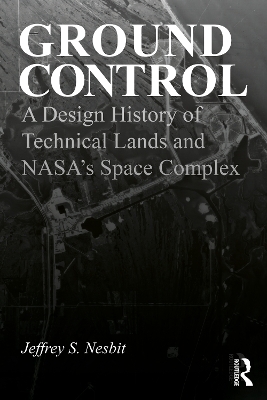
Ground Control
A Design History of Technical Lands and NASA’s Space Complex
Seiten
2024
Routledge (Verlag)
978-1-032-77005-5 (ISBN)
Routledge (Verlag)
978-1-032-77005-5 (ISBN)
This book explores the infrastructural history of the United States rocket launch complex and offers a new way of understanding how technological uses of place-based science were designed and constructed in support of both industrial and military activities in postwar America.
Ground Control: A Design History of Technical Lands and NASA’s Space Complex explores the infrastructural history of the United States rocket launch complex. Working primarily between 1950, the year of the first rocket launch at Cape Canaveral, to 1969, the Apollo moon landing, the book highlights the evolution of its overlooked architecture and infrastructural landscape in parallel to US aerospace history. The cases outlined in this book survey the varying architectural histories and aesthetic motivations that helped produce America’s public image of early space exploration. The built environment of the U.S. space complex shows how its expanded infrastructural landscape tended to align with national Cold War politics and themes found in the age of modernity. Examples across often inaccessible sites of remote landscape help explain the contingent histories and deep association of an American aesthetic, land-use, and ultimately a form of nation-building practices. Ground Control offers a new way of understanding how technological uses of place-based science were designed and constructed in support of both industrial and military activities in postwar America. This book will be of interest to researchers, scholars, students, and anyone with a general interest in the history of American infrastructure, land use, and space exploration.
Ground Control: A Design History of Technical Lands and NASA’s Space Complex explores the infrastructural history of the United States rocket launch complex. Working primarily between 1950, the year of the first rocket launch at Cape Canaveral, to 1969, the Apollo moon landing, the book highlights the evolution of its overlooked architecture and infrastructural landscape in parallel to US aerospace history. The cases outlined in this book survey the varying architectural histories and aesthetic motivations that helped produce America’s public image of early space exploration. The built environment of the U.S. space complex shows how its expanded infrastructural landscape tended to align with national Cold War politics and themes found in the age of modernity. Examples across often inaccessible sites of remote landscape help explain the contingent histories and deep association of an American aesthetic, land-use, and ultimately a form of nation-building practices. Ground Control offers a new way of understanding how technological uses of place-based science were designed and constructed in support of both industrial and military activities in postwar America. This book will be of interest to researchers, scholars, students, and anyone with a general interest in the history of American infrastructure, land use, and space exploration.
Jeffrey S. Nesbit is an architect, urbanist, and founding director of the research group Grounding Design. Nesbit is currently Assistant Professor in History and Theory of Architecture and Urbanism at Temple University, and previously taught at several institutions, including Harvard University, Northeastern University, University of North Carolina Charlotte, University of New Mexico, and Texas Tech University.
1. Introduction: The Space Complex 2. Interiority and the Vision of Power 3. Speed and the Image of Rationality 4. Enclosure and the Garden in the Machine 5. Redundancy and the Administrative Apparatus 6. Range and the Recovery Capsule 7. Earthmoving and the Endless Frontier
| Erscheinungsdatum | 10.07.2024 |
|---|---|
| Zusatzinfo | 80 Halftones, black and white; 80 Illustrations, black and white |
| Verlagsort | London |
| Sprache | englisch |
| Maße | 152 x 229 mm |
| Gewicht | 453 g |
| Themenwelt | Naturwissenschaften ► Biologie ► Ökologie / Naturschutz |
| Naturwissenschaften ► Geowissenschaften ► Geografie / Kartografie | |
| Technik ► Luft- / Raumfahrttechnik | |
| Wirtschaft ► Volkswirtschaftslehre | |
| ISBN-10 | 1-032-77005-8 / 1032770058 |
| ISBN-13 | 978-1-032-77005-5 / 9781032770055 |
| Zustand | Neuware |
| Haben Sie eine Frage zum Produkt? |
Mehr entdecken
aus dem Bereich
aus dem Bereich


